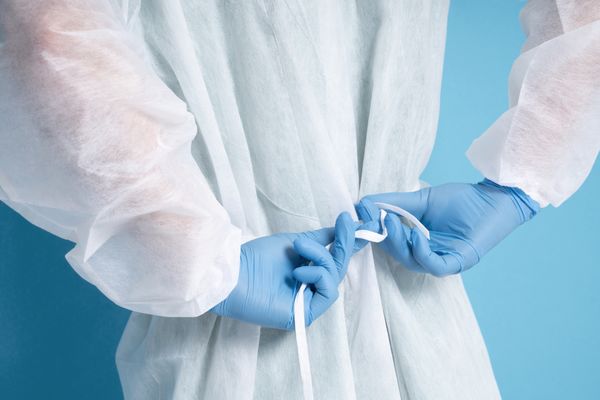
There’s a hissing noise, then a peal of nervous laughter. The grey gander is on the rampage again, chasing anyone who comes within a few metres of him and his goose. Usually the pair are sedate, waddling around together, orange beaks grazing the grass. They’re just another couple of farmyard characters among an assorted bunch of dogs, horses and a tailless cat. But spring is here, and aggression levels have risen with the sap.
This pair of geese have been here for a quarter of a century. Back in his youth, the male was even more assertive, he’d block the little lane, then as the cars tentatively tried to edge past, he’d attack the moving tyres. Like swans, these heavy geese, weighing in at up to 10kg, can cause injury to people. For this old boy, it is all bluster.
The female is a likely descendant of Embden geese, one of the largest goose breeds and a domesticated version of the wild greylag. Geese were commonly kept on farms, for meat, eggs and grass mowing. They also loudly and shrilly honk if there is a nighttime intruder, so they can be useful burglar alarms.
There’s a comedy to the way they waddle around the place together, occasionally terrorising innocent people. But, of course, behind many comedies, there is often tragedy.
The female has just laid her clutch of eggs. Every spring now for nearly 20 years, her nest has failed. It’s not for want of trying: the nest spot is perfectly selected, out of sight and avoiding the strongest sun; she plucks her chest bare to cushion her nest with the softest feathers; and she sits diligently for 28 days, the usual incubation period.
But at a certain point, after the eggs should have hatched, she will have to decide that it is no longer worth sitting and the nest will be abandoned. Goose fertility declines rapidly after only five or so peak breeding years. My dad is wondering about buying a couple of goslings or fertilised eggs and trying to infiltrate them into her nest when she is away feeding. For now, though, we wait with her for the inevitable, somehow also wondering if some miracle late goslings will arrive this year.
• Country diary is on Twitter at @gdncountrydiary







